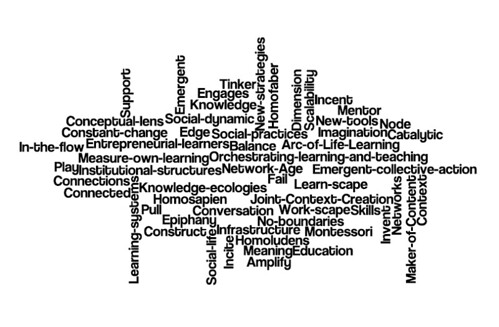The Global One-Room Schoolhouse: John Seely Brown (Highlights from his "Entrepreneurial Learner" Keynote at DML2012) from DML Research Hub on Vimeo.
I watched John Seely Brown's video Global One-Room Schoolhouse and Entrepreneurial Learning twice and wrote down words and phrases that resonated with me as important to understand. Some are concepts that I am afraid we are not seeing and understanding because we are so very tied to the traditional, one to many, industrial educational model.

As knowledge workers and educators, we are responsible for understanding our own effectiveness and lack of effectiveness and for understanding how our work and decisions will affect our failure or success in the future.
If institutional structures of learning--institutions of schooling, universities and research universities education and universities and look the same as they do now, we have problems. (paraphrased around 1.12 mark)Recently I have seen reports from some administrators and educators on the skills that they think that we need in the future for public education. The report was disappointing because what some educators see as necessary for the future is based on the way we have worked in the last 30 years.
Brown's analogy of the advantages and environments of the one room schoolhouse reminds of the effectiveness and why we should be return to Seaman Knapp's and George Washington Carver's Extension models.
Access to more and different kinds of information, joint context creation, co-learning, and contextual ubiquitous learning means we should be asking:
How do we transform from a slow moving steamship set on a course to kayaking into the flow? (paraphrased around the 2::00 minute mark)We better be creating arcs of life learning, creating content in joint contexts, participating in ever-changing knowledge ecologies, and orchestrating learning for ourselves and others.
I would love to see examples of institutions looking at learning in this way. Hopefully, you can point me to some examples.